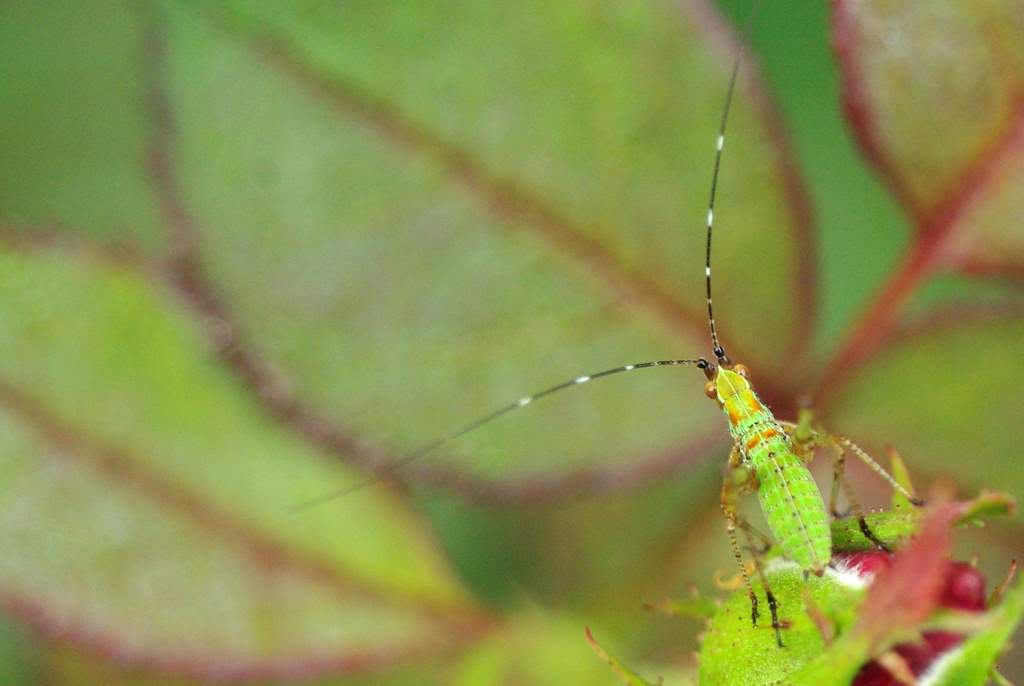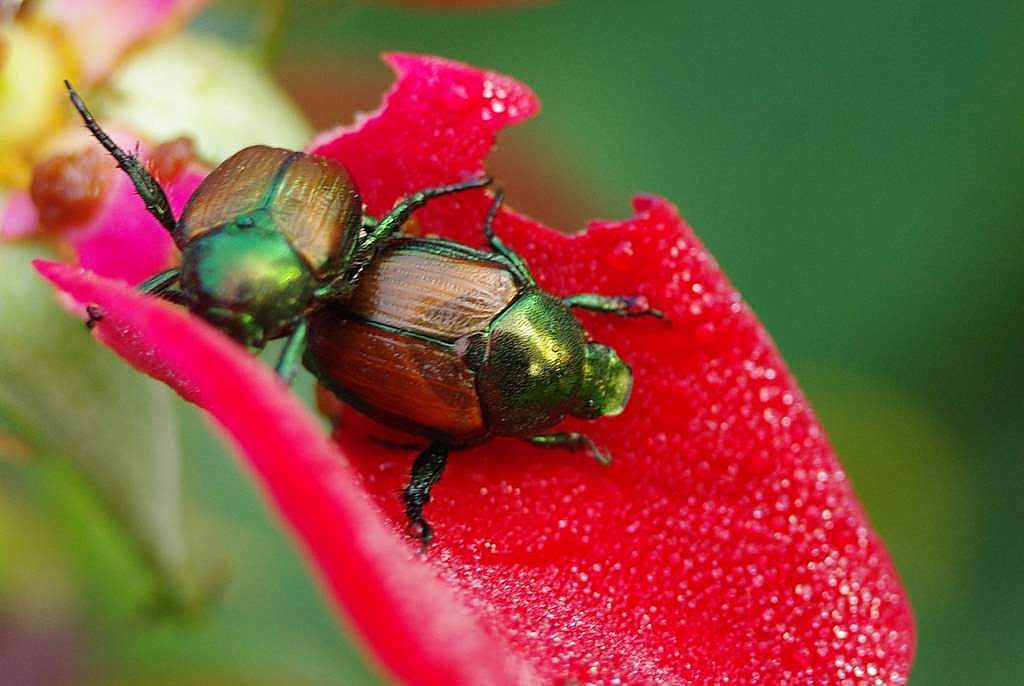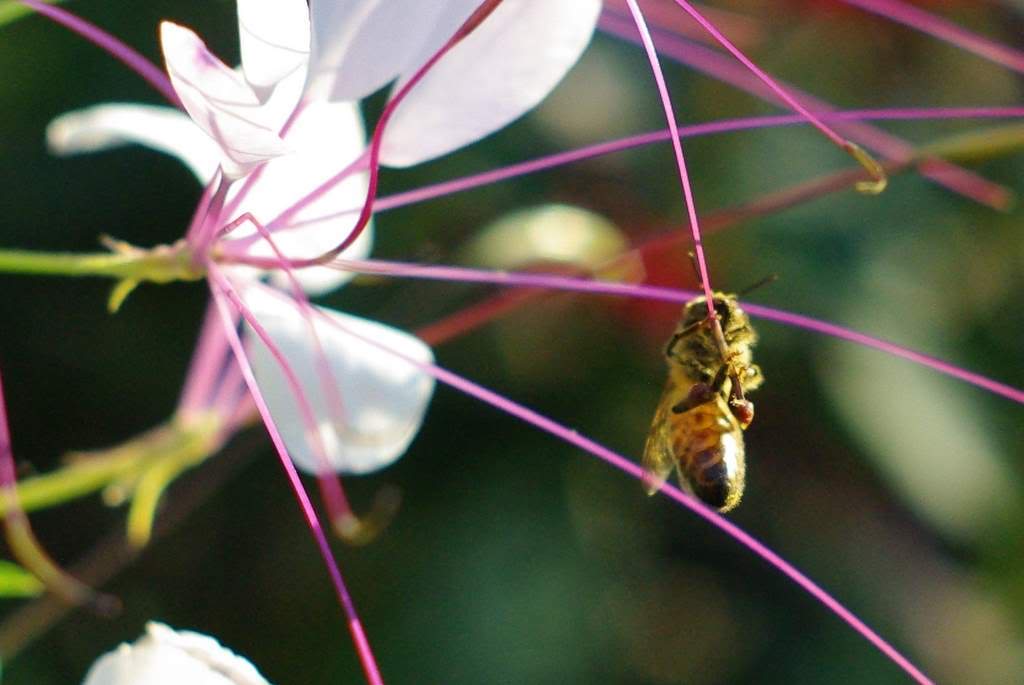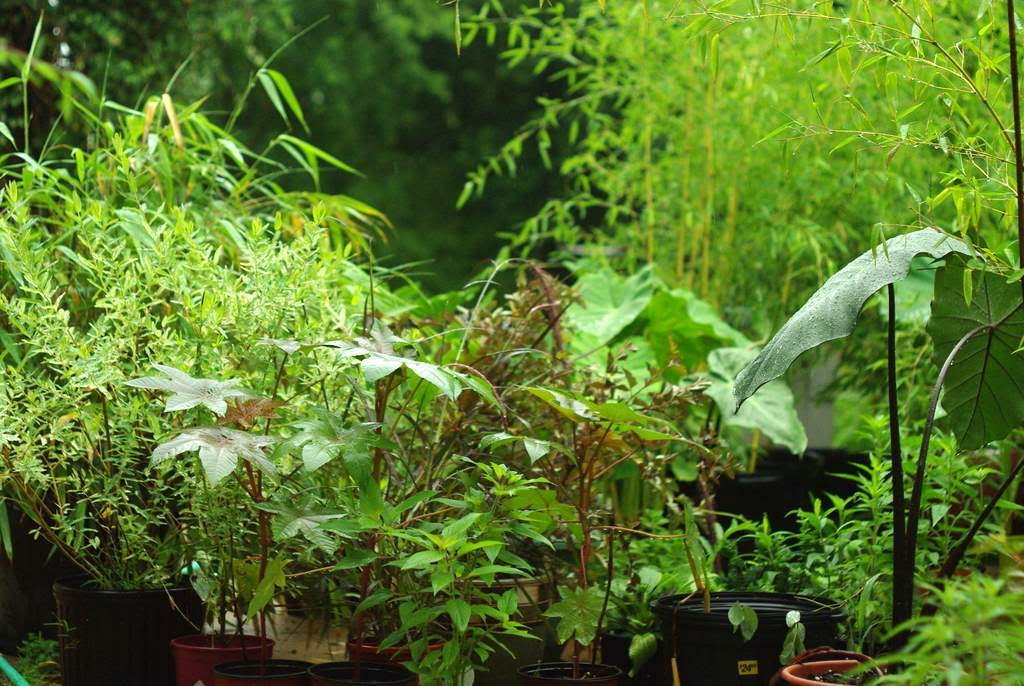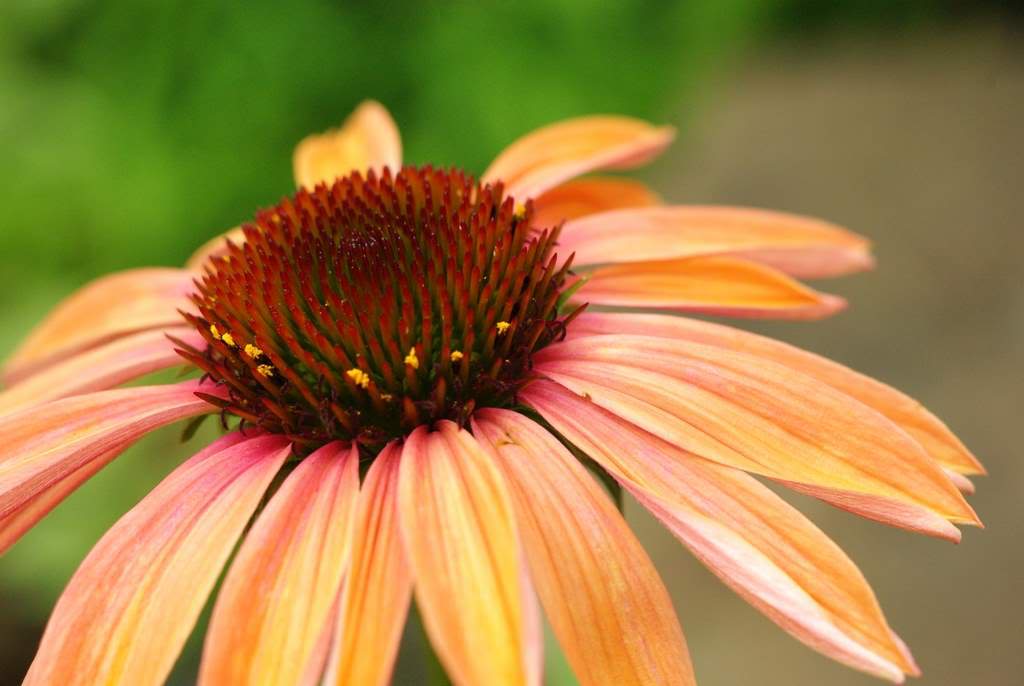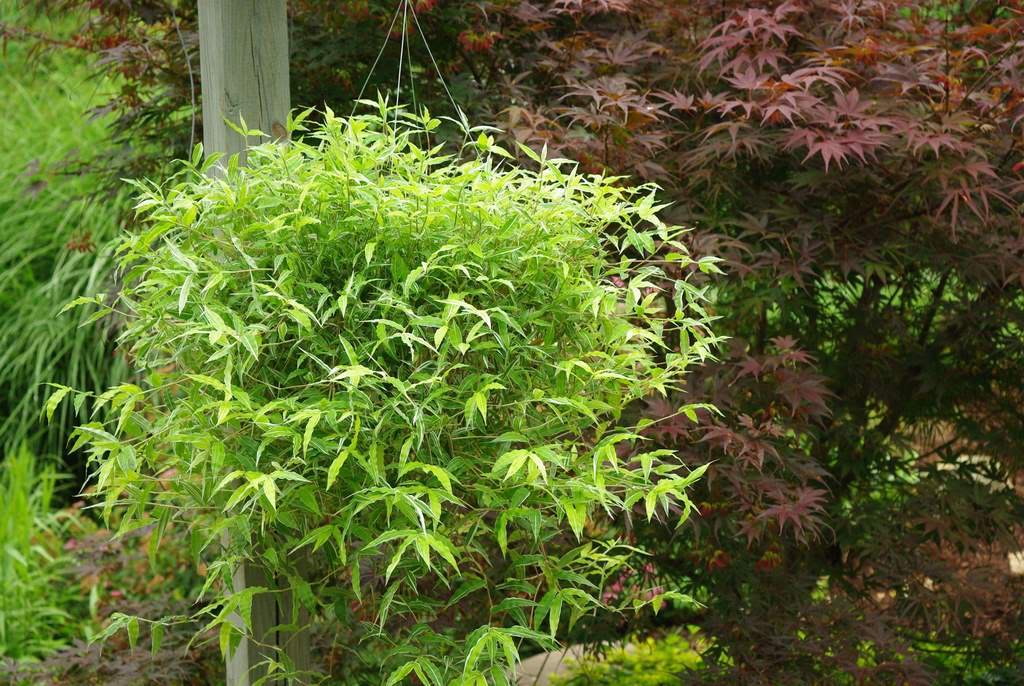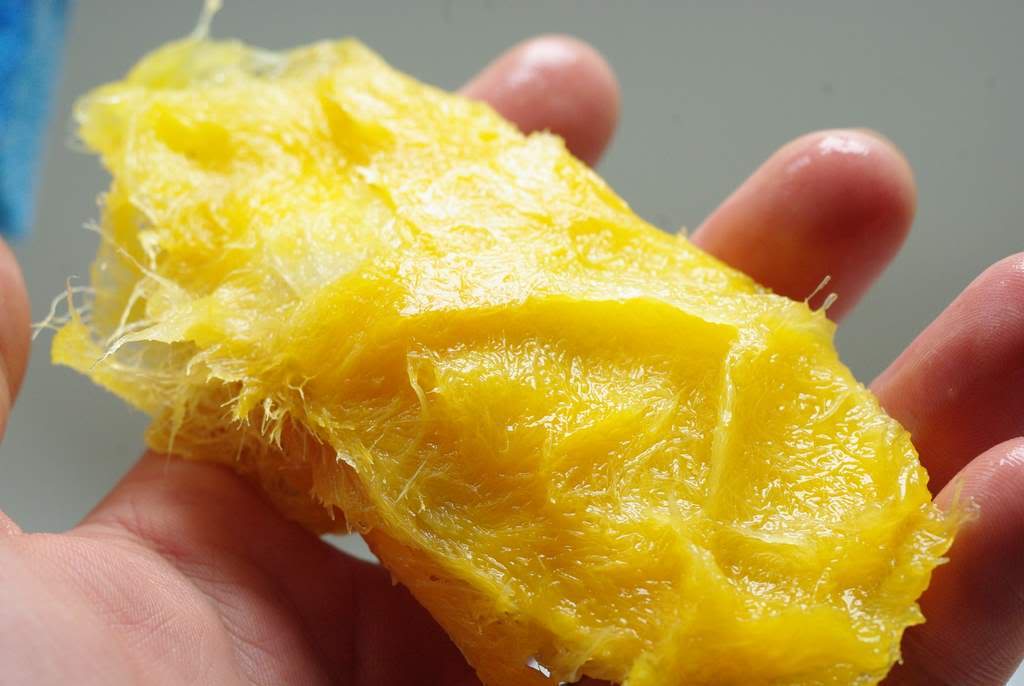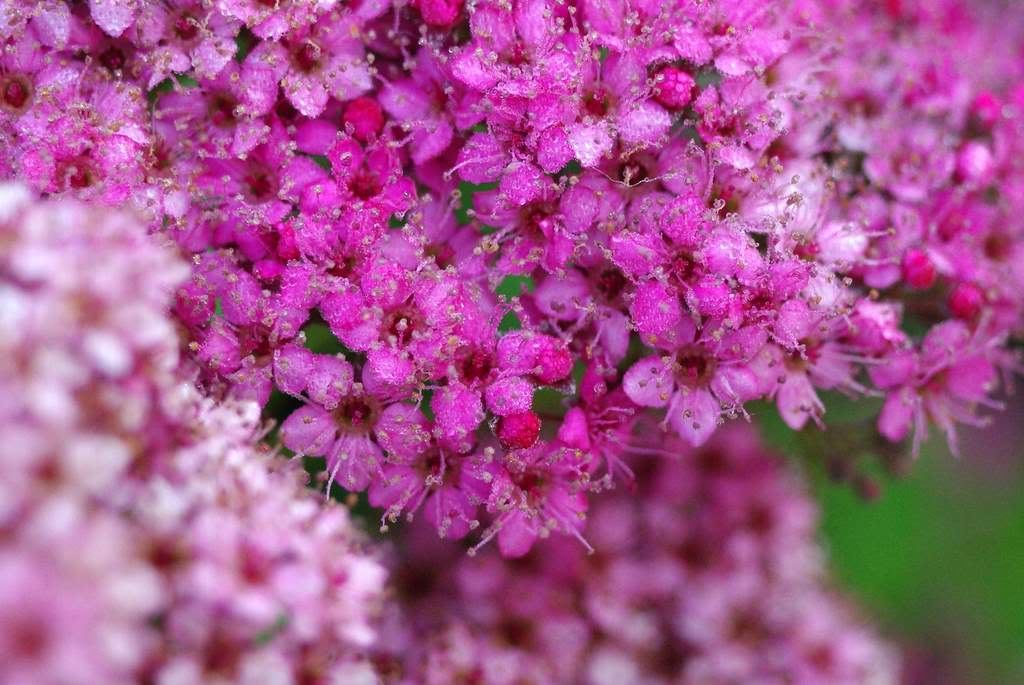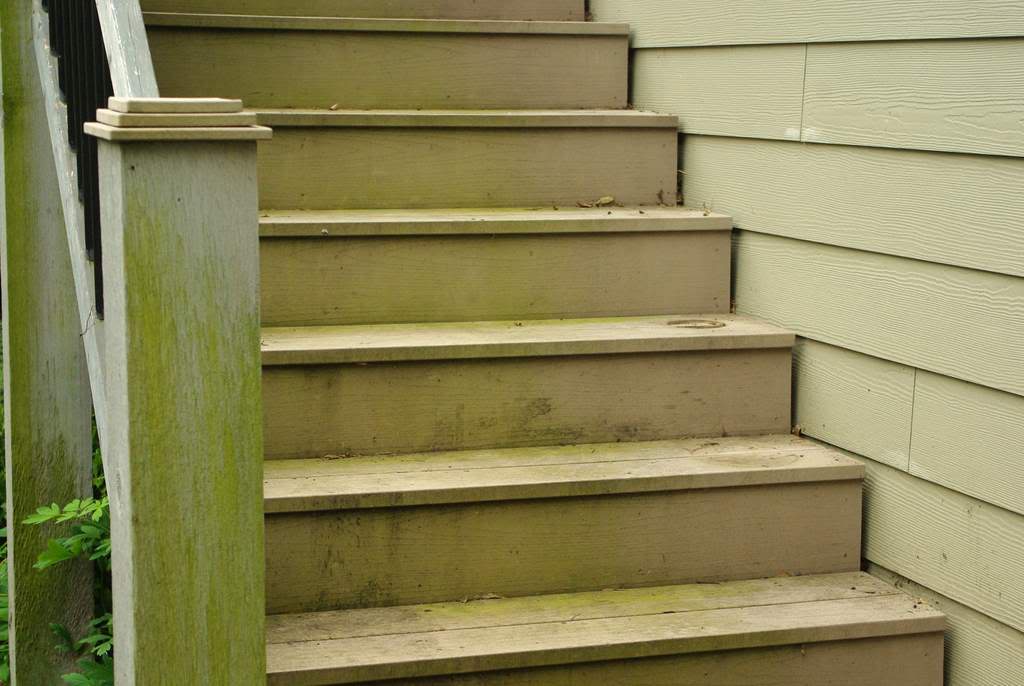A few summers ago when I was at the height of my bamboo-acquiring phase and had to have any bamboo that had even a remote chance of surviving in my climate I found a fantastic deal on a plant locally. Typically there aren't too many choices when buying bamboo locally, but every nursery usually carries one or two different types at different times of the year. I spent a lot of time combing the local garden centers that summer looking for bamboo (and other plants), and one morning I found two large pots of "dwarf whitestripe" bamboo marked down to $10.
I quickly grabbed one of them and planted it in a prominent spot in my garden, as Pleioblastus fortunei is a beautiful variegated bamboo. It would be treated as a groundcover bamboo here, dying back to the ground each winter, but coming back strong each spring. Unfortunately, the spring after being planted it
started to flower. I then read reports of other people's fortunei flowering too, which was distressing. When bamboo flowers, it usually puts all of its energy into producing seeds then dies. A bargain plant that dies is no bargain, is it? So I anxiously waited for this spring's shoots to see if the plant was going to produce more flowers than it did the previous year.
Read more...
